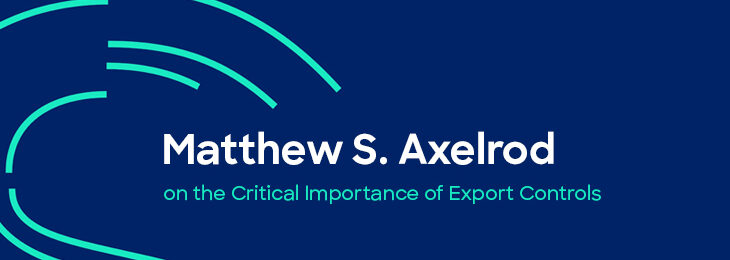
Good morning. I would like to thank ACAMS for inviting me to be a part of its anti-money laundering (AML) and financial crime conference again this year. I would like to spend a few minutes this morning discussing an area of longstanding concern at FinCEN: money laundering through real estate. As most of you know, FinCEN issued Geographic Targeting Orders (GTOs) in January 2016 requiring identification for high-end cash buyers in Manhattan and just south of here in Miami. Specifically, the GTOs, which went into effect on March 1, temporarily require certain U.S. title insurance companies to identify the natural persons behind companies used to pay “all cash” for high-end residential real estate in the Borough of Manhattan in New York, New York, and Miami-Dade County, Florida. And to be clear, when I say “all cash” I am not necessarily talking about hard currency in a duffle bag, but rather properties purchased without a mortgage.
For some, the recent GTOs may seem like the first time FinCEN has focused on the real estate industry. However, this is not new ground. The real estate industry’s vulnerability to money laundering has been a focus of the U.S. Congress and FinCEN for many years. International standards also exist to address these vulnerabilities. And it is not a new issue for me, either. In fact, it has been a reoccurring theme throughout my professional career, having spent the first 15 of my nearly 20 years in public service as a prosecutor at the U.S. Department of Justice.
For a large part of my time at Justice, I worked as an organized crime prosecutor focusing on transnational organized crime, and Russian organized crime in particular. A prominent part of my practice involved investigating and prosecuting cases where members of criminal organizations based outside of the United States were laundering their funds through the U.S. financial system. Often, this involved the suspected purchase of personal residences with criminal proceeds. And, of course, the mere purchase of real estate worth more than $10,000 with criminal proceeds is often sufficient to constitute a violation of U.S. AML laws without any further aggravating conduct. I remember well the real concern among many of my law enforcement colleagues in the late 1990s and early 2000s who were seeing what they believed to be members of transnational criminal organizations purchasing personal residences in large cities throughout the United States in the name of a shell company or a nominee. In some cities, my colleagues relayed that the residences remained vacant and that there were entire buildings that seemed empty – lights off.
More recently, I supervised a dedicated team of anti-corruption prosecutors who brought a forfeiture case involving property owned by the Second Vice President of Equatorial Guinea Teodoro Nguema Obiang Mangue that he purchased with the proceeds of corruption. In spite of his status as a politically exposed person and the numerous red flags indicating the problematic source of his funds, Nguema Obiang was able to purchase a $30 million estate in Malibu. Nguema Obiang accomplished this by working through a service provider to incorporate a shell company to hide his involvement in the all-cash transaction. This case garnered significant media and congressional attention at the time, but it is far from unique.
In the past five years alone, U.S. Attorneys’ Offices in San Antonio, Houston, New York City, Miami, and many other cities have brought major cases forfeiting tens of millions of dollars of real estate purchased with the proceeds of illicit activity. So needless to say, while FinCEN’s more recent actions on real estate money laundering have garnered attention, none of this is novel. In fact, the regulatory and legal structures that support our current efforts in real estate go back further than is commonly known.
The Bank Secrecy Act (BSA), which became law in 1970, authorizes Treasury to impose a variety of AML obligations on financial institutions. In 1988, the BSA definition of a financial institution was amended to include persons involved in real estate transactions. By including these businesses, Congress acknowledged the potential money laundering and financial crime risks in the real estate industry.
Then, in the aftermath of the 9/11 attacks, Congress passed the USA PATRIOT Act. The USA PATRIOT Act mandated that FinCEN issue regulations requiring financial institutions to adopt AML programs, or establish exemptions, as appropriate. Since that time, FinCEN has been using a risk-based approach to establish AML requirements for certain real estate businesses, focusing first on areas where the illicit finance risk appears the greatest, and where the vast majority of real estate dollar value is exchanged.
In April 2003, FinCEN issued its first rulemaking in this area. Our advance notice of proposed rulemaking, called an ANPRM, asked for input from the public on appropriate AML requirements for persons involved in real estate closings and settlements. The ANPRM stated that, although the term “persons involved in real estate closings and settlements” was undefined in our regulations, any rules likely would cover settlement/closing attorneys and agents, appraisers, title search and insurance companies, escrow companies, and possibly mortgage servicers and corporate service providers.
After reviewing comments from the public, FinCEN recognized the complexity of the problem and chose not to impose AML requirements across all persons involved in real estate closings and settlements until we identified the extent of the money laundering risks and the kind of illicit activities involved. So FinCEN focused first on where we saw the greatest systemic risk in the aftermath of the U.S. financial crisis: the real estate finance sector. To better understand the complex risks in this sector, between 2006 and 2013, FinCEN published a number of groundbreaking reports tracking the rise of mortgage fraud suspicious activity reporting (SARs) geographic trends, and fraud typologies.
Our efforts identified a number of AML and fraud risks in the mortgage lending industry, some of which were exacerbated because the non-bank portion of the industry did not have the same AML protections as the banking industry. As a result, FinCEN established AML program requirements for non-bank mortgage lenders and originators, (i.e. mortgage bankers and mortgage brokers), as well as the housing government-sponsored entities. FinCEN has taken an incremental approach to implementing rules for loan and finance companies, with the initial regulations covering non-bank residential mortgage lenders and originators, and possible future rules covering other consumer and commercial finance companies. These rules, in conjunction with the long-standing existing AML rules for depository institutions, now allowed AML coverage of the U.S. residential mortgage market. Based on August 2015 existing home sales statistics from the National Association of Realtors, we estimate that our current regulatory structure covers approximately 78 percent of real estate purchases nationwide.
But what about the remaining 22 percent? That’s the “all-cash” market. There is nothing wrong with buying a home with cash. Your parents may have done it when they downsized from your family home and used the proceeds to buy a condo. Currently, if a real estate transaction takes place without a mortgage issued by a bank or a mortgage broker, then none of the parties involved in the transaction are subject to AML program requirements. And frankly, in this area we need to catch up. Just last week, the Miami Herald noted that “cash deals accounted for 53 percent of all Miami-Dade home sales in 2015 — double the national average — and 90 percent of new construction sales, according to the Miami Association of Realtors.”
This is where the GTOs come into play. While our rules in the standard mortgage market have made it more inhospitable for fraudsters and money launderers, cash purchases are a gap we must address.
We have more data now than in 2003 to inform our decision-making. The analysis and DOJ forfeiture cases continue to show corrupt politicians, drug traffickers, and other criminals using shell companies to purchase luxury real estate with cash. We see wire transfers originating from foreign banks in offshore havens where shell companies have established accounts, but in many cases we also see criminals using U.S. incorporated limited liability companies to launder their illicit funds through the U.S. real estate market. The criminals will instruct the person involved in the settlement and closing to put the deed in the name of the shell company, thereby hiding the names of the actual owner or owners. This is often enough to dramatically increase the difficulty of tracking the true owner of a property in a transaction. The GTOs were designed to produce valuable data about some of these opaque transactions that will assist law enforcement and inform our broader efforts to identify where we see the greatest risks in the real estate sector.
FinCEN issued the GTOs in January with an effective date of March 1. The Covered Businesses have a 30-day window in which to file a report on a Covered Transaction, and we have just started to see the first reports coming in. FinCEN is also reviewing SARs filed on this issue, which are helping to provide greater clarity on suspicious activity taking place in this sector of the real estate markets in Miami-Dade and Manhattan.
Without a doubt, this is a complex issue. FinCEN has had productive discussions with different state regulatory and trade association partners to increase our understanding of the broad array of regulatory and licensing coverage in this area. And it is clear that to navigate these many, complicated issues well, we must continue engaging with our regulatory, law enforcement, and real estate industry partners. These discussions are a crucial part of determining where the most significant risks lie, whether additional AML requirements are needed, and how best to mitigate identified vulnerabilities while balancing the benefits of information gathering tools like the GTOs with the potential burden imposed on industry. We will also look to experiences in other countries that have addressed these same issues.
I have valued my dialogue with the real estate industry on this issue these past few months and look forward to continued engagement. Our discussions have been an important and necessary step in the right direction. In addition to these direct conversations, there have also been dozens of articles and blog posts written about the GTOs in the months since they were issued, including many in Spanish, Russian, and Chinese. We welcome this interest from real estate professionals and journalists.
But do I worry about the culture in certain segments of the real estate industry? Yes, I do. It was troubling to read that some legal and real estate experts mobilized immediately after the GTOs were announced to provide suggestions about ways to evade the reporting requirements. We all know that criminals seek the path of least resistance. So I ask the real estate professionals involved in transactions subject to the GTOs to work with us to obtain the information we need to understand, consider, and address risks in the real estate industry.
But it is also important to highlight that the GTOs are not a “crackdown,” as they have been described. FinCEN does not expect to resolve the issue of money laundering through real estate with two temporary and geographically limited GTOs. This step is a pilot effort in two jurisdictions that are popular destinations for luxury buyers, have a higher than average percentage of all-cash transactions, and are the focus of heightened law enforcement interest. This pilot effort will help us gather information while furthering our incremental, risk-based approach to regulating this industry.
We have worked hard at FinCEN over the years to “level the playing field” in the AML space. That means ensuring that banks, credit unions, money services businesses, casinos, card clubs, and many others all have appropriate AML protections. Given the breadth of our AML coverage, many of you here today already work in a financial institution that is covered by the BSA’s reporting and recordkeeping requirements. You file Currency Transaction Reports and monitor and report suspicious activity. You have programs in place to train employees on your AML responsibilities and you retain a fair amount of required records. Complying with these requirements costs your business time and money. But I think you also recognize that it’s more than just good business, and it’s more than doing what’s best for the bottom line. It’s about doing what’s right. Anyone reading the news understands the grave harm caused by money laundering in the United States and abroad. Each of us must do our part to keep illicit actors out of the financial system.
So when I look around this room, I am grateful to see so many of our partners across the financial industry who are helping to safeguard the U.S. financial system from abuse. It is a daunting responsibility. Especially when the stakes are so high. But when government and industry take on this challenge together, we have proven time and time again that we can make a difference. And I look forward to having the real estate industry as yet another partner standing with us in this effort to combat money laundering.
Remarks given by Jennifer Shasky Calvery, director of the Financial Crimes Enforcement Network, at the ACAMS moneylaundering.com conference in Hollywood, Florida on April 12, 2016










